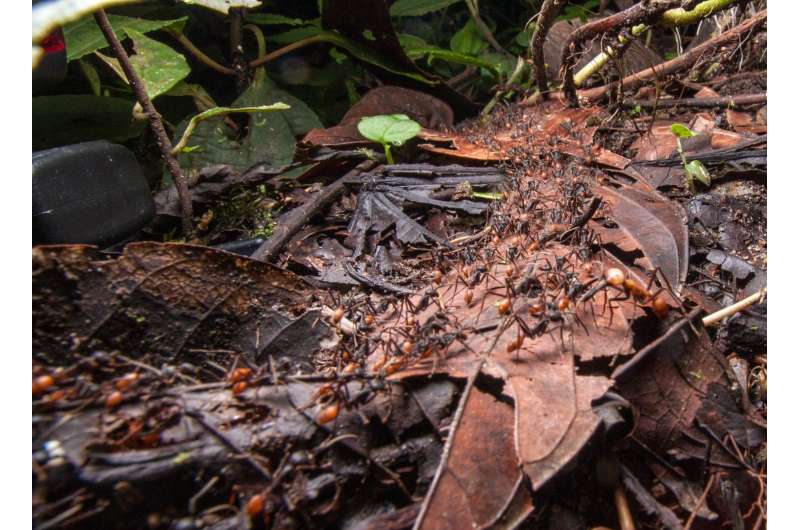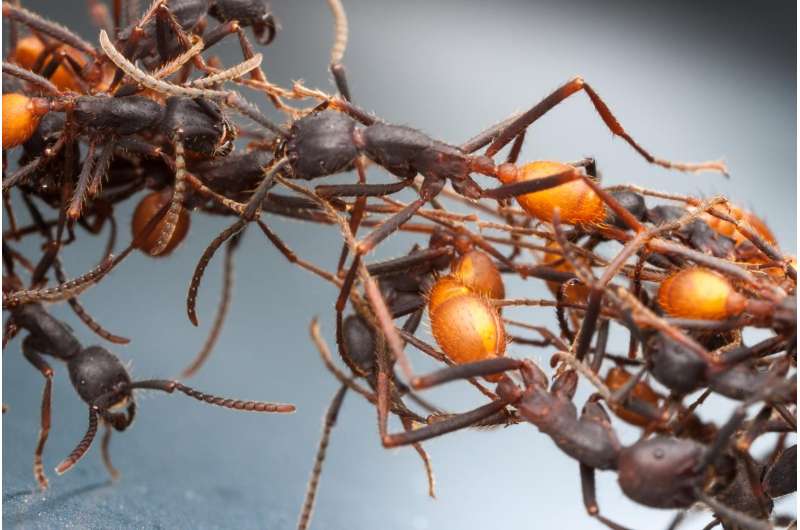Neotropical army ants are top predators in terrestrial ecosystems, with swarm raids that often contain hundreds of thousands of individuals cooperating to hunt, kill, and transport their prey. Credit: © Alex Wild
Scientists have long believed that the Isthmus of Panama emerged from the ocean three million years ago, triggering a massive interchange of species between the Americas in its wake. However, recent conflict in both geological and biological literature suggests that this simple story is insufficient to explain the available evidence. In a new study, published in the journal of Molecular Ecology, Field Museum scientists explored questions fundamental to this interchange using novel genomic methods in army ants, finding that land bridges likely connected the Americas millions of years earlier than previously thought.
"Recent advances in technology now allow us to apply genomic methods across the tree of life, rapidly increasing the pace of scientific discovery," said Max Winston, Ph.D. candidate at The Field Museum and University of Chicago. "Without these tools, we would not have been able to recover the striking pattern of repeated speciation on the isthmus. Our work implies that early land connections were used to colonize Central America, but it also highlights the large role of the isthmus in generating biodiversity."
But with so many organisms to choose from, why were army ants selected for this study? It turns out their biology makes them ideal for asking questions about land-based dispersal. For example, despite their presence throughout the tropics, they are completely absent from all the true Caribbean islands. Although this may seem unexpected, the answer lies in their wingless queens, which restrict them to exclusively colonize new territory by land. This was an important fact that enabled this study to rule out aerial and aquatic dispersal when army ant species colonized Central America millions of years ago.
Workers of the Neotropical army ant species Eciton burchellii cooperate to build a living bridge constructed of their own bodies. Credit: © Alex Wild
"What I love about the study is that we were able to leverage the unique biology of the organisms to address a question about the history of Earth that's been around for decades. Army ants are top predators with huge colonies of individuals that collectively hunt, kill, and transport their prey," said Max. "Dispersing through the environment is a lot harder when you have to do it en masse."
"The emergence of Panama is arguably one of the most significant events in the recent geological history of the Americas," said Field Museum Curator Dr. Corrie Moreau. "Not only does this research inform us about army ant evolution it is also a significant step forward in helping biologists understand how geological events shaped the biodiversity we see today."
More information: Max E. Winston et al, Early and dynamic colonization of Central America drives speciation in Neotropical army ants, Molecular Ecology (2016). DOI: 10.1111/mec.13846
Journal information: Molecular Ecology
Provided by Field Museum























